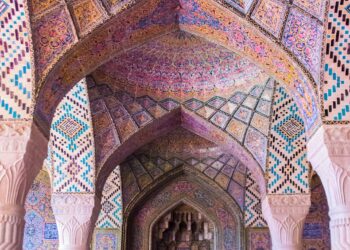Sacred spaces play a significant role in various religions around the world. These spaces often hold deep spiritual significance and are considered holy by followers of that particular faith. The concept of sacred spaces can be traced back to ancient times, where temples, shrines, and other religious buildings were constructed to honor and worship deities.
In Hinduism, one of the world’s oldest religions, sacred spaces are known as mandirs or temples. These temples are dedicated to various gods and goddesses and are considered their abodes on Earth. Hindu temples are usually ornately decorated with intricate carvings, statues, and paintings that symbolize various aspects of the divine.
In Christianity, churches serve as sacred spaces where believers come together to worship, pray, and receive sacraments. Churches are considered to be houses of God and are often adorned with religious artworks like stained glass windows, statues, and altars. The architecture of Christian churches varies greatly depending on the denomination, with some churches being grand cathedrals and others more modest in design.
In Islam, mosques are considered sacred spaces where Muslims gather for prayers and worship. Mosques are typically simple in design, with a focus on functionality rather than ornamentation. The most important sacred space in Islam is the Kaaba in Mecca, Saudi Arabia, which is believed to be the holiest site in the Islamic faith.
In Buddhism, sacred spaces are known as stupas or pagodas, which are structures that house relics of the Buddha or other revered figures. Buddhists often visit these sites to pay respects, offer prayers, and meditate. Some of the most famous Buddhist sacred spaces include the Bodhi Tree in India, under which the Buddha is said to have attained enlightenment, and the Shwedagon Pagoda in Myanmar, which is covered in gold leaf and precious gems.
The concept of sacred spaces is not limited to organized religions. Indigenous cultures around the world also have sacred spaces that hold spiritual significance. These spaces are often natural landmarks like mountains, rivers, or forests that are believed to be inhabited by spirits or gods.
Exploring the concept of sacred spaces in different religions can provide insight into the beliefs, practices, and traditions of various cultures. These spaces serve as a link between the physical world and the spiritual realm, offering believers a place to connect with the divine and find solace in times of need.
Overall, sacred spaces are an integral part of religious life and play a vital role in fostering a sense of community, reverence, and devotion among believers. Whether it’s a grand cathedral, a simple mosque, or a natural landmark, these spaces serve as reminders of the transcendent and the divine in a world that is often filled with chaos and uncertainty.













